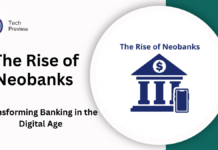A credit score of 665 can leave you in a bit of a gray area—neither bad nor good, it sits in what’s called the “fair” category. While this score isn’t necessarily harmful, it can hold you back from accessing the best credit opportunities, which is why it’s crucial to understand what it means and how to improve it.
In this article, we’ll break down what a 665 credit score signifies, how lenders view it, and actionable steps to boost it.
What Does a 665 Credit Score Really Mean?
A 665 score falls in the “Fair” category, which spans from 580 to 669. This means your credit history likely has some areas of concern—such as late payments or higher credit utilization—that are preventing you from achieving a “Good” score.
MUST READ: 700 Credit Score with a CPN: Key Strategies for 2024
Though it’s not considered poor, it places you at a disadvantage when it comes to obtaining loans with favorable terms. Roughly 17% of U.S. consumers fall within the fair score range, and many may face challenges in securing credit with low interest rates.
Lenders’ View on a 665 Credit Score
For lenders, a score of 665 signals a moderate level of risk. They might view you as someone who could default or miss payments based on past behavior, but they’re still willing to work with you.
However, you may not qualify for the same competitive rates and terms as someone with a higher score. Lenders in the subprime market will likely approve you, but expect higher fees and interest rates compared to borrowers with better credit scores.
What is a Good Credit Score?
To understand how 665 stacks up, it helps to know the breakdown of credit score ranges:
- 800-850: Exceptional
- 740-799: Very Good
- 670-739: Good
- 580-669: Fair
- 300-579: Poor
To qualify for the best credit offers, you’ll need to surpass the “Good” range and aim for a score of 740 or above. Your 665 score is just shy of that, but it’s within reach if you make the right moves.
Can You Improve Your 665 Credit Score?
Yes, absolutely. While 665 is below the ideal range for top-tier credit offers, it’s still a good starting point. With intentional actions, you can raise your score into the “Good” range and unlock better financial opportunities. Here’s how:
Evaluate Your Credit Report
The first step in improving your score is understanding what’s influencing it. Order your credit report from the three major bureaus—Equifax, Experian, and TransUnion. Look for any errors or negative marks, such as late payments or collections, and dispute them if necessary. This is a good starting point for improving your score.
Make Payments on Time
The largest factor influencing your credit score is your payment history. Late payments, defaults, and bankruptcies have a negative impact. Set reminders or automate bill payments to ensure you never miss a due date. Consistently making on-time payments will improve your credit over time.
Keep Your Credit Utilization Low
Your credit utilization ratio—how much of your available credit you use—accounts for a significant portion of your score. Ideally, you should keep your utilization under 30%. If your credit card balances are high, try paying them down. If you can’t, consider asking for a credit limit increase to help lower your ratio.
Consider a Secured Credit Card or Credit-Builder Loan
Secured credit cards and credit-builder loans can help you rebuild your credit by demonstrating that you’re able to manage credit responsibly. With a secured card, you’ll need to provide a deposit, which will act as your credit limit. By using this card regularly and paying off the balance on time, your credit score should gradually rise.
Challenges Faced by Those with a Fair Credit Score
Although improving your credit score from 665 is entirely possible, you will face some challenges along the way. Many individuals in the “Fair” range experience issues such as high credit utilization, missed payments, or even accounts sent to collections.
Common Roadblocks
A significant percentage of people in the fair credit range have missed payments in the past or have accounts in collections. These marks stay on your credit report for several years, impacting your ability to secure credit at favorable rates. However, it’s important to note that these negative marks aren’t permanent. The key is to take proactive steps to rebuild your credit and show lenders that you can manage credit responsibly.
Understanding the Breakdown of Your Credit Score
FICO® Scores and other credit scoring models are based on several key factors that measure your creditworthiness. Here’s a breakdown of what contributes to your score:
- Payment History (35%): The most important factor. Timely payments increase your score, while missed or late payments hurt it.
- Credit Utilization (30%): This measures how much of your available credit you’re using. A lower utilization rate is better for your score.
- Length of Credit History (15%): A longer credit history is generally favorable, as it shows more data on your credit behavior.
- Credit Mix (10%): A mix of different types of credit, such as credit cards and installment loans, can improve your score.
- Recent Inquiries (10%): Each time you apply for new credit, it results in a hard inquiry. Too many inquiries in a short time can lower your score.
Effective Strategies to Raise Your Credit Score
Now that you understand the key factors, here are some practical strategies for improving your score:
1. Pay Your Bills on Time
Consistently paying bills on time is the most straightforward way to improve your score. If you’re prone to forgetting payments, consider setting up automatic payments or using reminders.
2. Apply for a Secured Credit Card
If you don’t have a credit card, or if your existing cards have high balances, consider applying for a secured card. This type of card requires a deposit, which serves as collateral for your credit limit, making it easier to get approved.
3. Use Credit-Builder Loans
These loans are designed specifically to help individuals with less-than-perfect credit. Credit unions and community banks often offer them. The loan amount is typically placed in a savings account and can only be accessed after the loan is repaid.
4. Keep Your Credit Utilization Under 30%
To boost your score, aim to use less than 30% of your available credit. If possible, pay down existing credit card balances or request an increase in your credit limit to lower your utilization rate.
5. Avoid Opening Multiple New Accounts
While it’s tempting to open new credit cards to increase your credit limit, doing so can hurt your score due to hard inquiries. Only apply for new credit when absolutely necessary.
Conclusion: Moving Forward with a 665 Credit Score
While a 665 credit score may seem like an obstacle, it is actually an opportunity for growth. By implementing strategic actions—such as paying bills on time, lowering credit card balances, and diversifying your credit mix—you can improve your score and move into the “Good” category.
This will not only help you qualify for better loans and lower interest rates, but it will also give you more financial flexibility in the future.
People May Ask
Is a 665 credit score good enough to get a loan?
A 665 credit score may qualify you for a loan, but you’ll likely face higher interest rates and less favorable terms compared to someone with a higher score.
How long will it take to improve a 665 credit score?
The timeline for improving your score depends on your individual financial situation. With consistent efforts, such as making timely payments and reducing debt, you can see significant improvements within a few months to a year.
Can a 665 credit score prevent me from getting a mortgage?
It may not prevent you from getting a mortgage, but you might not qualify for the best interest rates or terms. A score of 665 is on the lower end of what most lenders would consider “Good” for a mortgage.
What’s the fastest way to boost a 665 credit score?
Paying down high credit card balances and ensuring that all payments are made on time are the fastest ways to improve your credit score. Additionally, checking your credit report for errors and disputing them can provide a quick boost.
Click here to learn more.









